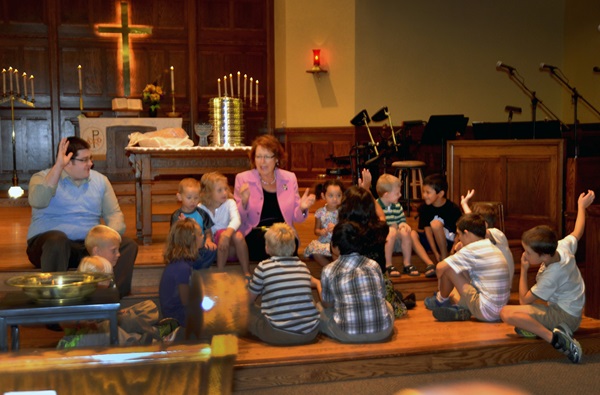Less is more.
That’s the advice from United Methodist children’s ministry leaders on how best to share the Easter story, including Good Friday, with kids.
“’Jesus dies. His disciples were sad.’ All of these are words that kids know. Children can feel the loss without the trauma,” asserts Melinda Shunk, children's coordinator for the Arkansas Annual Conference.
Additional resources
- "Celebrate Wonder Bible Storybook," ages infant to 1st grade
- "Growing In God's Love: A Story Bible," ages 4-8
- "Spark Story Bible," 2nd-4th grade
- "Children of God Storybook Bible," 2nd-4th grade
- "Kid's Spark NRSV Bible," 4th-6th grade
The Rev. Dr. Leanne Hadley, associate pastor for children, youth and families at Christ Church in Louisville, Kentucky, affirms the point in her book, “Blessed to be a Blessing.”
“The last week of Lent is called Holy Week because it is the last week of Jesus' life. It begins with Jesus' entry into Jerusalem on what came to be called 'Palm Sunday,' and ends with his death. The story moves from great joy to great sorrow," says Hadley.
“Young children do not have to hear all the details of this story to understand that Jesus was sad and scared. They cannot understand what ‘dying on the cross for our redemption’ means, but they can understand his emotions,” Hadley says.
Hadley’s book contains two chapters of Lent and Easter children’s time lessons for pastors to adapt for use within their own congregations.
The Rev. Kathy Pittenger from the Michigan Conference suggests asking children to act out the various emotions heard in the Easter story by making faces to express the emotions they hear.
“You can say, ‘Today is a day of celebration! It’s also a day filled with lots of emotions. This past year has been filled with lots of emotions. Sometimes there has been fear, anxiety, sadness and joy. Let’s listen to the Easter story from Matthew and listen for different emotions,’” Pittenger suggests.
She has included more Easter children’s resources on the Michigan Conference website.
When Shunk introduced sensory bags into Good Friday services, she saw attendance rise exponentially. One service, she says, increased from four families to 50.
The small fabric bags, with items purchased through Oriental Trading Company or a discount retailer, contain a die, small wooden cross, nail, bit of sponge, rubber crown of thorns, toy gold coin and a small rock. Paired with the respective Bible verses, pastors share the Good Friday story as kids take the various items from the bag.
“The activity becomes intergenerational worship as adults help children navigate the items from the sensory bag while listening to the Good Friday story,” Shunk explains.
Finding age-appropriate Bibles and books is important also. A list of Bibles for infants through sixth graders, recommended by Shunk based on their theology, is included in a sidebar.
“Don’t get into extensive long-winded explanations about sacrifice and the sin of the world with children,” Shunk advises. “Young children need (age-appropriate) facts, and as they grow, their faith develops.”
Other Resources
Crystal Caviness works for UMC.org at United Methodist Communications. Contact her by email or at 615-742-5138.

